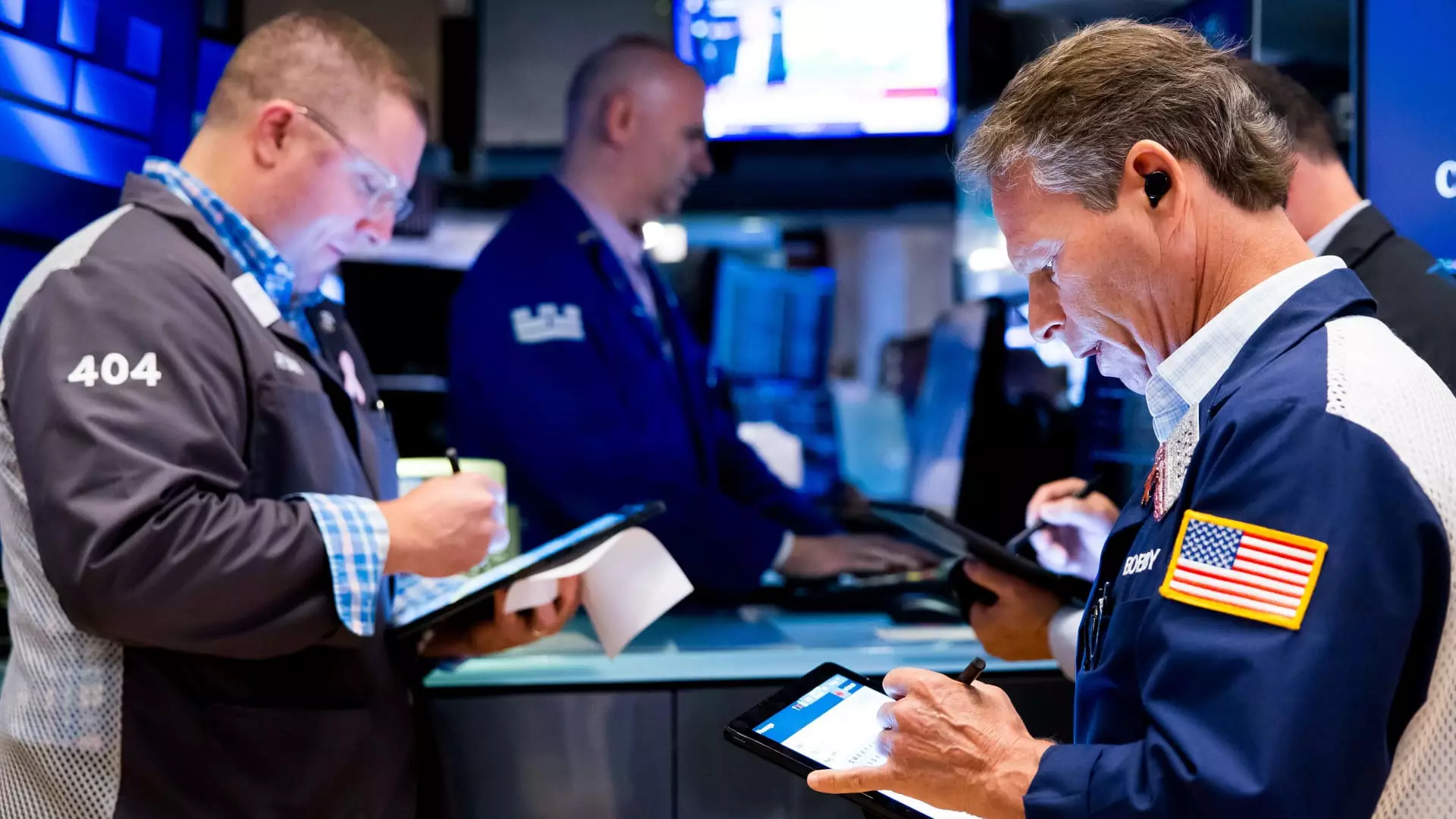The recent surge in U.S. stock markets has painted a picture of economic strength and resilience, yet beneath the veneer lies a troubling reality that warrants scrutiny. The record-high closes of the S&P 500 and Nasdaq are celebrated as milestones of robust growth, but this exuberance may be dangerously detached from the broader economic signals. A closer look reveals that the seeming confidence is fueled more by fleeting data than genuine stability. The jobs report, hailed as a sign of enduring vitality, masks underlying vulnerabilities—an economy still teetering on the edge of uncertainty.
While the Bureau of Labor Statistics reports a surprising increase in nonfarm payrolls and a decline in unemployment, these figures are misleading if taken at face value. The unexpected rise in employment does little to dispel fears of a slowdown, especially as private payrolls unexpectedly declined just a day prior. This discrepancy signals a disconnect between different data sources and underscores how fragile the current consensus may be. It’s possible that policymakers and investors are riding a wave of optimism that could crash if future reports reveal more eyes of vulnerability beneath the surface.
Market Euphoria or Delusional Overconfidence?
The rally, undoubtedly bolstered by the Federal Reserve’s signals of maintaining current interest rates, fosters a dangerous illusion—that the economy is invincible. The market’s near-certain expectation of rate stability, driven by a strong employment report, seems overly confident in the narrative that growth is sustainable. Yet, the Federal Reserve’s clear stance of holding rates steady conflicts with broader economic signals, such as rising Treasury yields, which often indicate investor wariness rather than assured confidence.
This disconnect raises questions about the sustainability of the current trajectory. Are markets simply riding a wave of sentiment, ignoring the risks embedded in geopolitical tensions, trade policy upheaval, and domestic economic indicators? The recent political developments—such as the fluctuating prospects of U.S.-Vietnam trade agreements—highlight the volatility lurking in policy decisions that could swiftly diminish the optimism. Relying on such unpredictable factors to sustain a bull market borders on wishful thinking, especially when structural economic issues remain unaddressed.
The Cost of Overconfidence in Policy and Political Climate
Economic optimism seems to be heavily influenced by political signals rather than foundational strength. The passage of the tax bill and the progress on trade negotiations provide temporary relief, but these legislative and diplomatic efforts are often marred by unpredictability and political brinkmanship. The market’s optimistic response to recent political developments reveals a dangerous complacency that assumes policy stability when, in reality, political conflicts are far from resolved.
Moreover, the looming challenges of trade negotiations, especially with key players like China and Vietnam, threaten to turn this optimism sour. If the anticipated tariffs or trade restrictions are implemented more aggressively, the repercussions for businesses could be severe, undermining the very growth investors currently celebrate. The short-term rally discounts these risks, setting the stage for a potentially sharp correction once reality catches up with press releases and political posturing.
The Illusory Ease of Market Confidence and the Need for Skepticism
The Monday morning quarterbacking of market trends, fueled by recent gains, overlooks the inherent risks embedded in the current economic landscape. The markets’ resilience appears more like a house of cards than a fortress built on solid foundations. Displaying an almost cult-like faith in policy measures, central bank decisions, and political stability dismisses the mounting evidence of underlying economic fragility.
As a critic, I must emphasize that genuine resilience is rooted in tangible economic fundamentals—high-quality employment, stable consumer confidence, and sustainable fiscal policies—not in optimistic rhetoric or temporary market highs. The current narrative, driven by market euphoria and short-term political gains, risks leading investors into a false sense of security. When the inevitable correction arrives, it might be sharper and more painful than anticipated, exposing the superficiality of today’s market confidence.
Continuing to celebrate record highs without a critical understanding of the underlying vulnerabilities risks fostering complacency, leaving the economy ill-prepared for adverse shocks. A more cautious approach, acknowledging both the strengths and the threats, is crucial in navigating the turbulent waters ahead. But as it stands, the market’s optimism seems more a mirror of political and rhetorical fervor than a reflection of economic reality.

